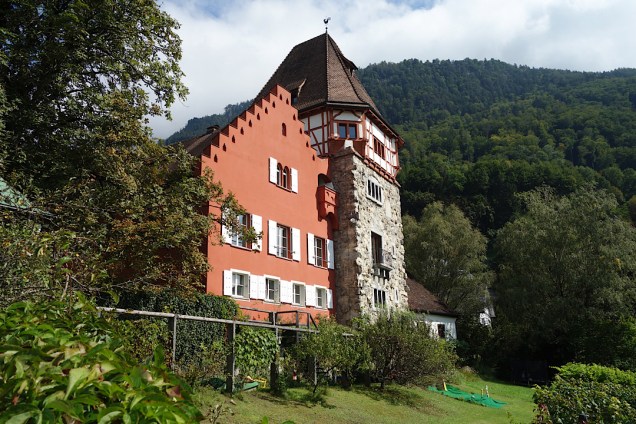Steve and I ate countless delicious meals over the course of this trip, but I have to say: few things tasted more satisfying than the glue on the stamp I bought in Monaco, the last of the seven Europeans microstates we had set out to visit.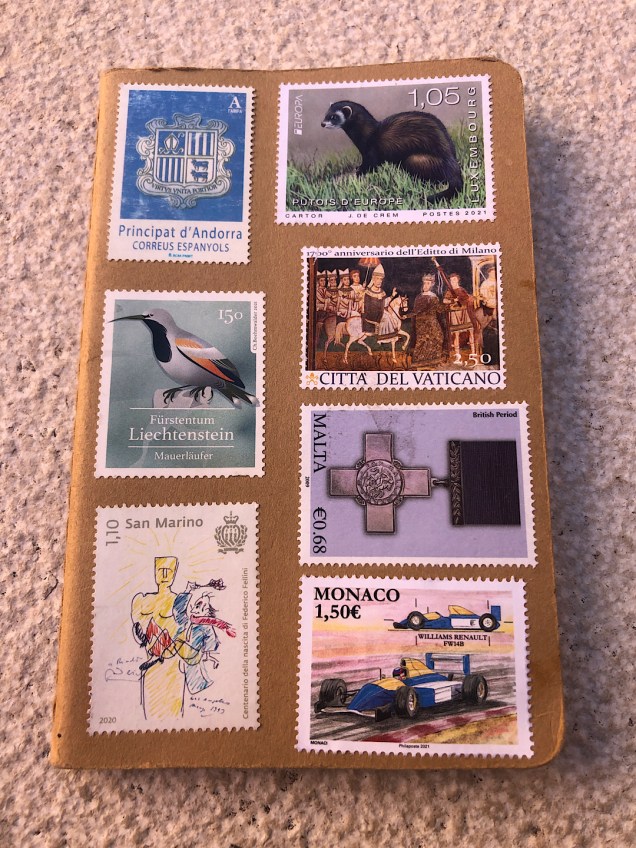
I started planning the first iteration of our Microstate Tour early in 2020 and had booked virtually every aspect of it when governments at home and abroad prohibited international traveling. I then planned and arranged a second version in the spring of 2021 — that one structured around the two French weddings we were invited to (in Bordeaux and Provence). But uncertainty over lingering Covid regulations forced the respective couples to postpone their nuptials to the fall. So I planned and booked the trip a third time. Heading to the airport at the end of August, I only half-believed Steve and I would complete the itinerary.
But it all came off, almost flawlessly. The worst glitch was Alitalia’s cancellation of our three flights (one from Rome to Malta and the one from Sicily to Nice, via Rome). I found alternative carriers, however, and I even nurse some hope we’ll get our money back from the canceled legs.
At the second wedding last weekend, several people asked what my favorite tiny country was. What I could tell them was that the one both Steve and I longed to spend more time in was Malta.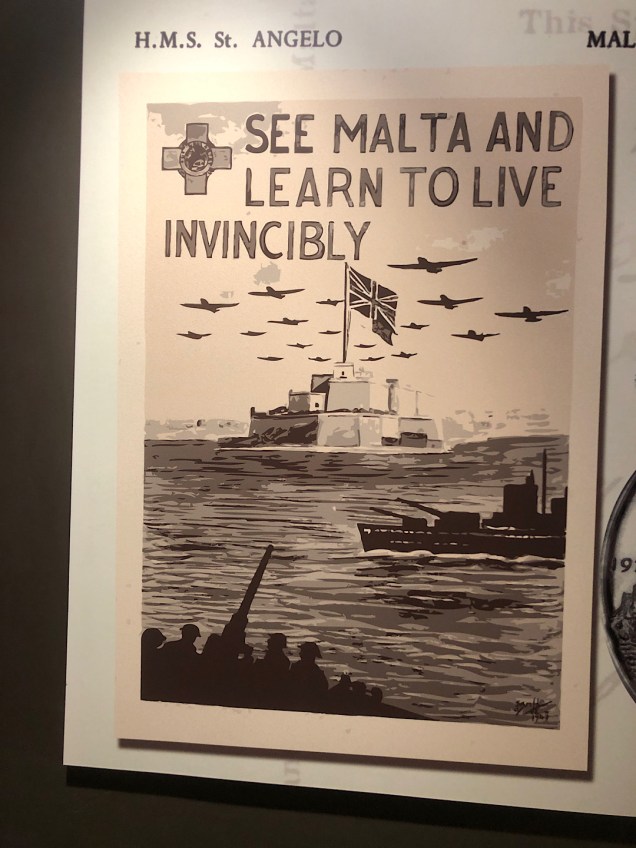 Ironically, Malta is the one microstate I didn’t blog about. We had barely 72 hours there and then went on to Sicily, where we met our friend Michael and blasted around the Italian island like Amazing Race contestants. On Sicily I barely had a moment to sit down, let alone write. And then we raced on to Monaco.
Ironically, Malta is the one microstate I didn’t blog about. We had barely 72 hours there and then went on to Sicily, where we met our friend Michael and blasted around the Italian island like Amazing Race contestants. On Sicily I barely had a moment to sit down, let alone write. And then we raced on to Monaco.
Before going to Malta I had predicted to Steve that San Marino would wind up winning the biggest piece of my heart. I loved the feisty Sammarinese independence and the beauty-drenched vistas you meet around every corner. The vibe is very different in Malta. Roughly four times bigger than San Marino, it’s a monochromatic world, at least around its magnificent harbor (the only area we got to).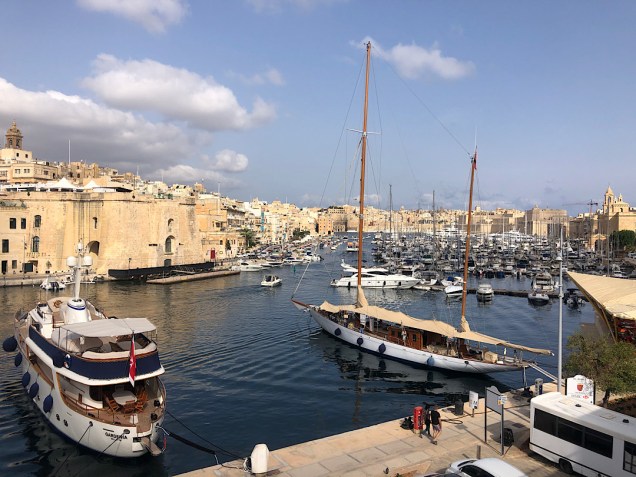
Almost everything is built out of pinkish tan sandstone, which makes it look a bit like a movie set. Dozens of productions have been filmed here in recent years.
Malta the country consists of five islands. We only got to the biggest, most populated one (also called Malta). We stayed in a 400-plus-year-old building on Senglea, a finger of land sticking into the harbor.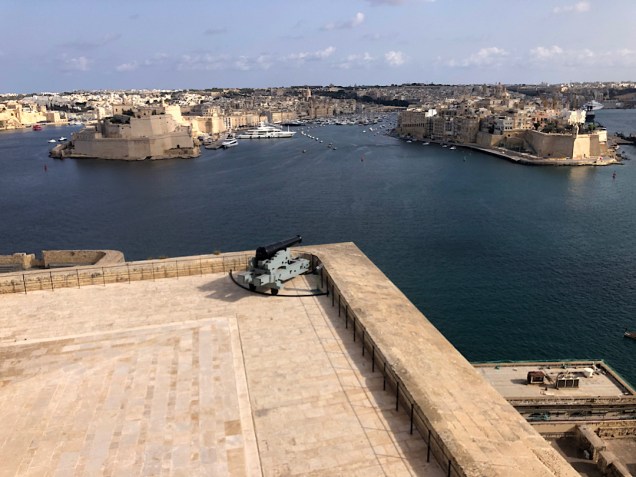
This side of the harbor was the one-time bastion of the famous Knights of Malta, wealthy Christian noblemen who hailed from all over Europe and hated Islam. In the early 12th century, they fought as Crusaders and over time evolved into something like anti-Islamic pirates. In 1530, the Holy Roman Emperor Charles V gave them Malta as a permanent home, and they reached perhaps their greatest moment of glory in 1565 when about 500 knights and a couple thousand foot soldiers held out against a vastly larger fleet of Turkish warriors. After their success in resisting the Turkish siege, Muslim expansion into Europe ended; a pretty good case can be made that because of what happened in Malta 450 years ago, Western Europe today is dotted with cathedrals rather than mosques.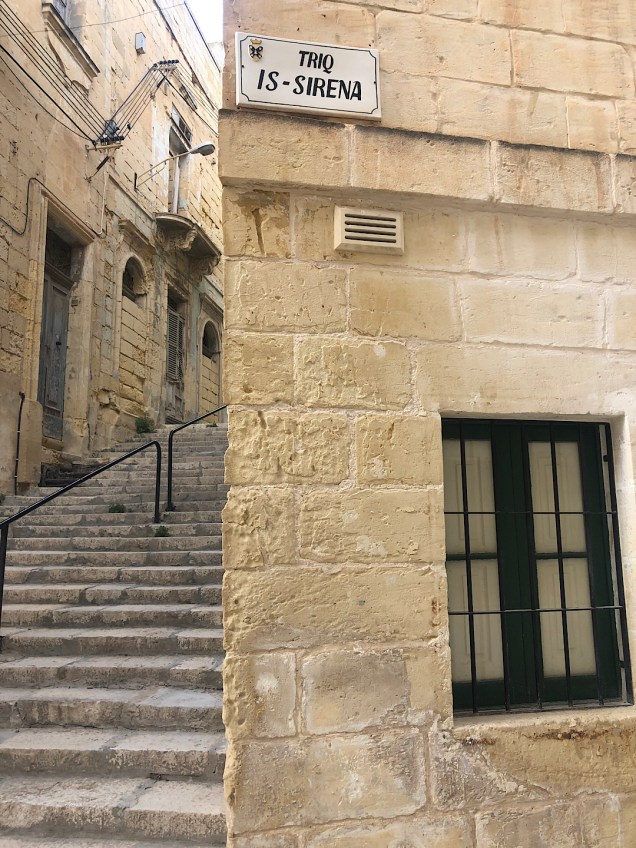
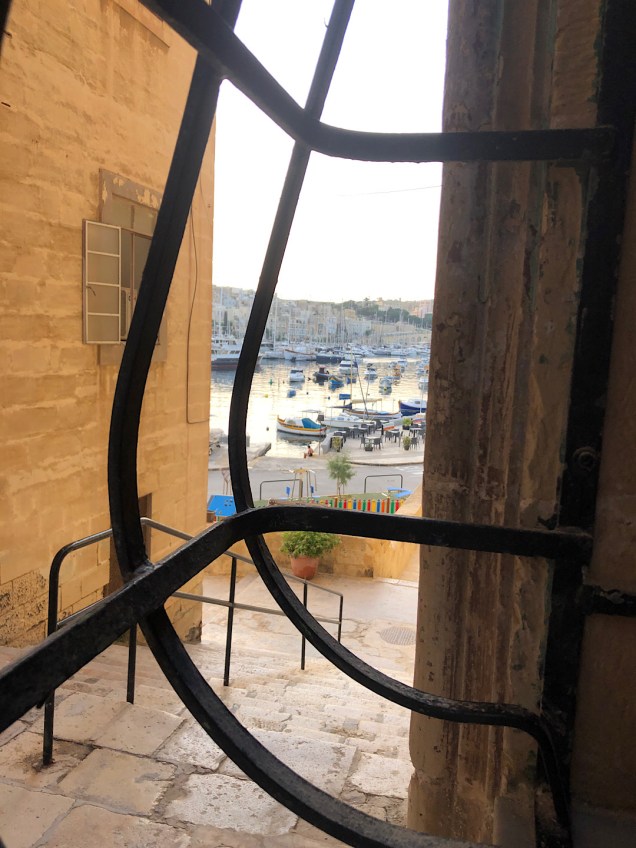
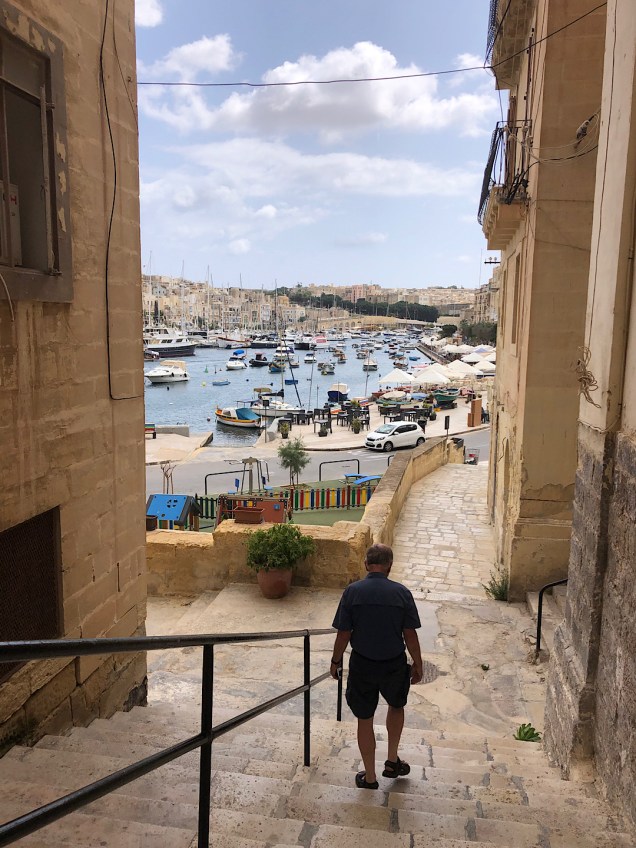
The larger than life character who led the Maltese resistance was a Knight named Jean La Valette. He oversaw the building of a new capital across the harbor from Senglea and its two sister cities. The new enclave became Valletta, which claims the honor of being the first planned city in all of Europe. La Valette designed an orderly grid in which tall stone buildings lined streets made intentionally narrow so that folks walking down them would be shaded from Malta’s blazing sun. Valleta is just a ten-minute ferry ride from Senglea. Steve and I made the trip a couple of times in order to sample Valleta’s crackling night life, visit a few of its sumptuous churches, and take in some of it scenic viewpoints.
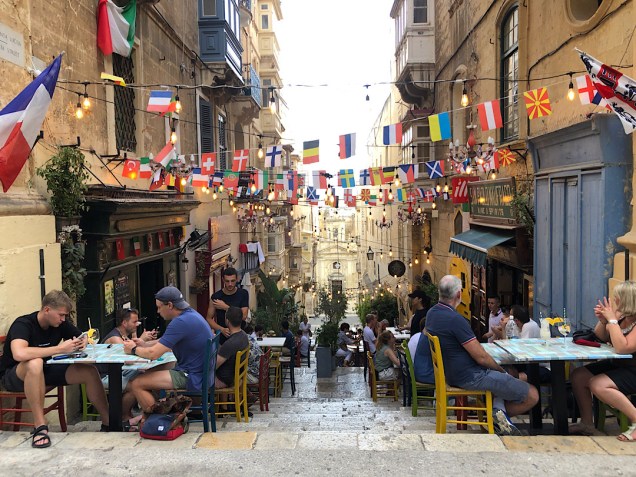
But we were keenly aware of all we couldn’t cram in — exploring important archeological sites both on Malta and Gozo (the second biggest island), swimming and snorkeling in the turquoise local waters, visiting other museums and forts, and more.
But you can never see it all, eh? On our Microstate Tour, Steve and I were away from home for 42 nights. We passed through 11 different countries, slept in 22 different lodgings, and on several occasions I felt as tired as I can imagine ever feeling. Yet over and over the sights and people and new insights recharged us. If we didn’t see it all, we never regretted trying.
As one final note, I have to credit an excellent book, Secrets of the Seven Smallest States of Europe, by Thomas Eccardt that I stumbled upon after I was well into planning Steve’s and my trip. Published in 2005, it’s too dated to be a practical travel manual today, but Eccardt’s lucid writing about the mind-numbingly complex history of all these places was a great help. To anyone else who’s tempted to see Andorra, Liechtenstein, Luxembourg, San Marino, Vatican City, Malta, and Monaco — or any combination of them — I recommend it. And wish you bon voyage!

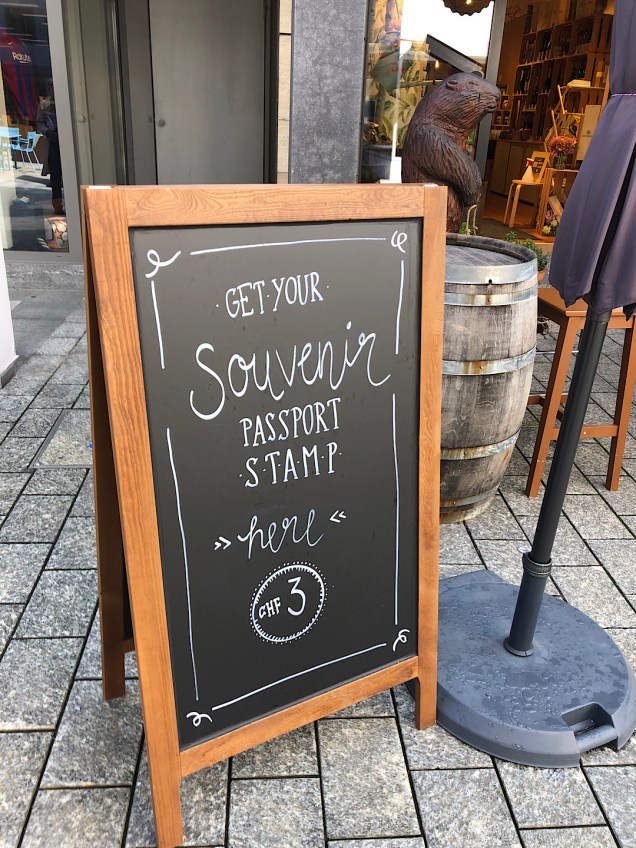



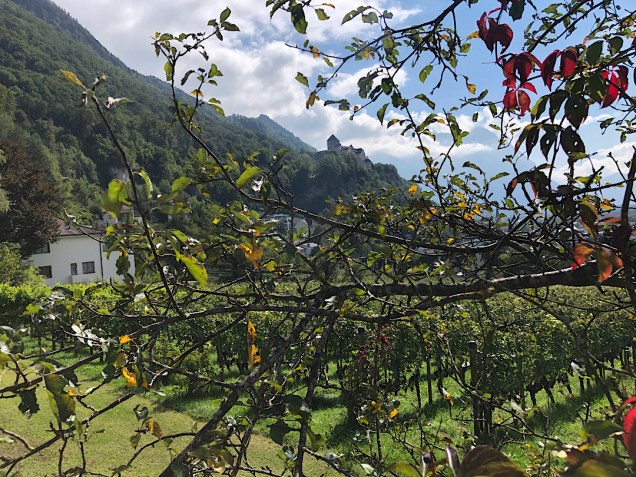

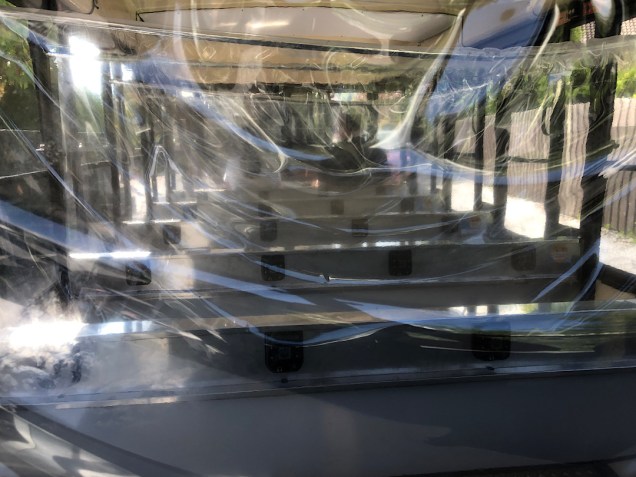

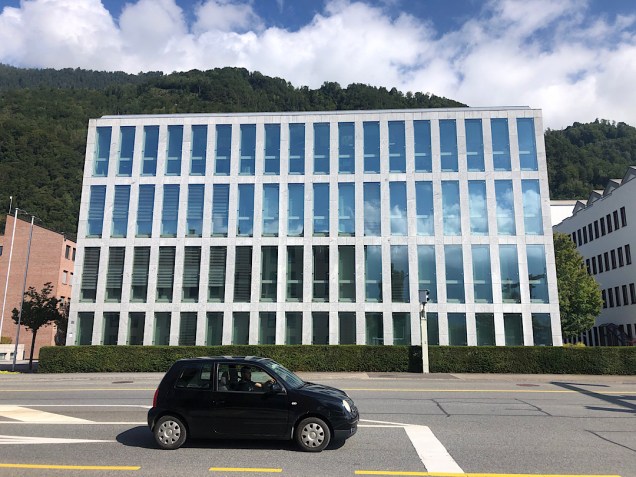 We also noted many massive buildings that we assumed house the countless companies from all over the world that set up headquarters here in order to decrease their tax burden. (While lower than what those companies would pay elsewhere, that tax money is a significant contributor to Liechtenstein’s current wealth.) The soulless structures share the streets with old homes that could have informed Walt Disney’s vision of Euroquaint.
We also noted many massive buildings that we assumed house the countless companies from all over the world that set up headquarters here in order to decrease their tax burden. (While lower than what those companies would pay elsewhere, that tax money is a significant contributor to Liechtenstein’s current wealth.) The soulless structures share the streets with old homes that could have informed Walt Disney’s vision of Euroquaint.